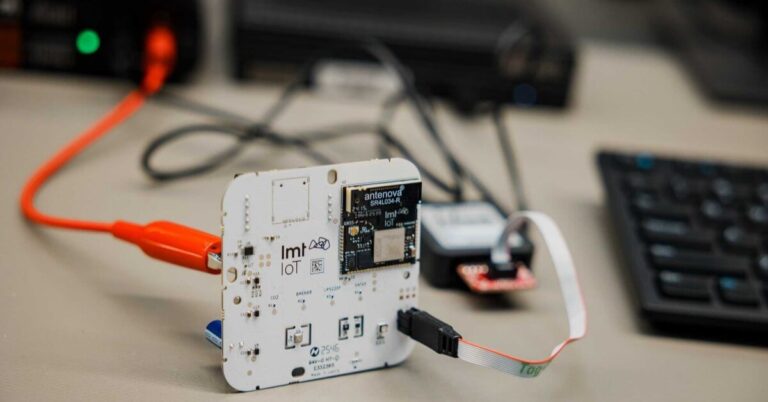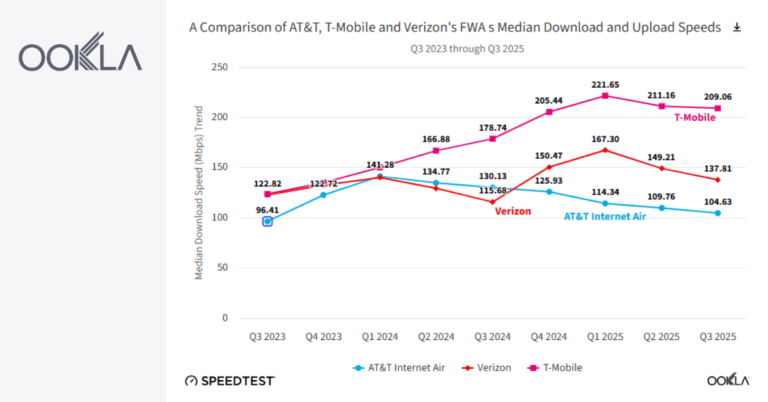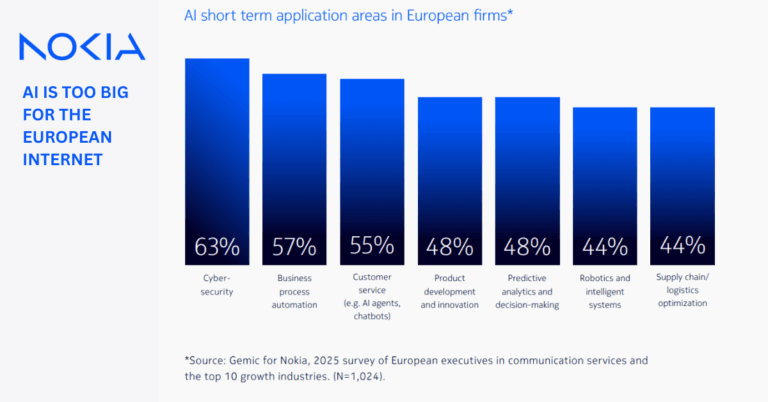Why $300B in Telecom Spending Isn’t Delivering ROI
Since 2018, telecommunications companies across North America and Europe have poured more than $300 billion into expanding their networks. This spending spree supports the rollout of advanced technologies like 5G, fiber broadband, and telco cloud platforms. These technologies are fundamental to enabling everything from smart cities and telemedicine to connected vehicles and industrial automation.
However, while capital expenditures (CapEx) continue to grow, the return on invested capital (ROIC) has declined by 10–15% across major markets. This trend raises a troubling question: Why aren’t these investments translating into improved network performance, efficiency, and financial outcomes?
The answer lies in a less visible but increasingly urgent challenge — network observability.
How Network Observability Impacts Telecom Performance
As telecom networks evolve to support new demands, network observability has emerged as a critical yet often overlooked capability. It goes far beyond traditional monitoring by enabling operators to continuously monitor, analyze, and act on real-time network data. With observability, providers can detect anomalies, prevent faults before they cause outages, and perform predictive maintenance to ensure network resilience.
In today’s telecom landscape, networks are no longer static. They are highly dynamic, distributed, and layered, involving:
- 5G network slicing for customized service delivery
- Shared Radio Access Network (RAN) infrastructure
- Complex stacks of virtualized and containerized functions
- Seamless integration with edge computing and multi-cloud environments
- A growing mix of private networks and wholesale connectivity solutions
In this environment, legacy monitoring tools fall short. They lack the speed, depth, and intelligence required to navigate the complexity of modern telecom infrastructure. Yet, observability often remains an afterthought, overshadowed by physical deployments and customer-facing upgrades.
While telecom providers continue ramping up investments in 5G, fiber-optic expansion, and cloud-based services, observability hasn’t kept pace. This disconnect is becoming more visible: a majority of telecom CEOs (67%) plan to boost capital expenditures in the next three to five years, but fewer than one-third expect revenue growth to keep up.
Complicating the picture further are:
- The rise of network-sharing agreements, increasing interdependency
- New competitive pressures from MVNOs, wholesale fiber providers, and eSIM technologies
- Greater exposure to operational inefficiencies and cybersecurity risks
In this context, robust network observability isn’t just helpful—it’s mission-critical. It allows telecom operators to gain full visibility across complex, distributed environments, enabling them to optimize performance, secure infrastructure, and deliver consistent service at scale.
By embedding observability into both strategic planning and regulatory frameworks, telecom leaders can ensure that their infrastructure investments deliver measurable value—not just capacity.
Why Telecom ROI Continues to Decline Despite Heavy CapEx
According to recent industry reports:
- 67% of telecom CEOs anticipate continued CapEx growth over the next 3–5 years.
- Only 30% expect revenue growth to match that pace.
- Over 500 network-sharing agreements have emerged globally, increasing operational complexity.
- Competitive pressures from MVNOs, eSIM providers, and wholesale fiber operators are compressing margins.
These figures reveal a stark reality: investing in new infrastructure isn’t enough. Without visibility into how those networks perform in real-time, operators struggle to optimize performance, reduce operating costs, and maintain security.
The Overlooked Role of Regulation in Network Visibility
Historically, telecom regulation has focused on spectrum allocation, market competition, and buildout mandates—all of which are important for expanding access. But very little regulatory attention has been paid to network observability, especially as networks become more complex and interconnected.
As a result:
- Disruptions go undetected until they reach critical mass.
- Maintenance remains reactive, not predictive.
- Cybersecurity risks grow, especially in shared network environments where visibility is limited.
This regulatory gap represents a major vulnerability. In an era of increasing digital dependence, lack of visibility is no longer acceptable—it’s a national risk.
Using AI to Transform Telecom Observability and Efficiency
Modern telecom networks demand modern solutions. AI and machine learning now offer powerful tools to transform observability from a static process into a dynamic, intelligent system.
AI-driven observability platforms can:
- Analyze millions of data points in real-time
- Detect anomalies and performance degradation before users are affected
- Identify emerging threats across distributed environments
- Trigger automated responses to prevent outages
- Optimize network traffic for efficiency and cost savings
These platforms aren’t just a luxury—they are essential for maintaining service quality and improving the return on massive infrastructure investments. In fact, AI observability directly supports smarter network automation strategies, reducing the need for manual intervention and enabling operators to scale without proportional increases in OPEX.
3 Policy Actions to Improve Telecom Network Visibility
To ensure public and private sector investments in telecom infrastructure deliver real value, governments must take proactive steps to embed observability into policy and regulation. Here are three critical actions:
1. Mandate Real-Time Network Monitoring
Introduce regulations that require telecom operators to implement real-time health and performance monitoring systems. These platforms should track metrics such as latency, jitter, packet loss, and throughput across all network domains—from the RAN to the core to the edge.
Additionally, regulators should consider establishing standardized observability frameworks that provide a unified reporting structure across providers. This would give national regulators clearer insight into network stability and performance trends—and allow them to respond faster to outages or security breaches.
2. Incentivize AI-Based Network Optimization
Encourage the adoption of AI observability tools by offering tax incentives, low-interest financing, or public-private partnerships. Support for AI innovation in telecom would:
-
Boost infrastructure ROI
-
Lower operating costs
-
Improve energy efficiency and sustainability
-
Reduce downtime and improve customer experience
This approach mirrors successful policies in smart grid and transportation sectors, where digital intelligence has improved operational efficiency and resilience.
3. Strengthen Cybersecurity and Compliance Frameworks
Shared infrastructure and open interfaces increase cyber risk. Policymakers should enforce auditable observability standards, ensuring providers deploy tools that actively detect threats and anomalies in real time.
Observability should be a compliance requirement, especially for providers participating in network sharing, offering wholesale access, or supporting critical infrastructure sectors like healthcare, defense, and finance.
What’s at Risk Without Better Network Observability?
If telecom providers and regulators fail to address the observability gap, they risk:
- Lower quality of service, as outages and performance issues go unresolved
- Higher operational costs, due to inefficient troubleshooting
- Increased cyber threats, particularly in shared or virtualized networks
- Erosion of public trust, as users experience more frequent disruptions
- Widening of the digital divide, as inefficiencies hinder expansion into rural or underserved areas
The impact extends beyond individual companies. Poor network visibility can threaten the reliability of national digital infrastructure, affecting everything from emergency services to remote education and smart agriculture.
Why Observability Must Be Central to Telecom’s Future
The telecom sector is at a pivotal moment. As networks become more complex and mission-critical, the industry must move beyond physical infrastructure expansion and focus on intelligent, resilient network operations.
This shift requires not just new technology, but a new policy mindset. Governments and regulators must modernize telecom frameworks, embed observability into regulatory standards, and support the use of AI and automation to manage and secure tomorrow’s networks.
Visibility isn’t a technical detail—it’s the foundation for a high-performing, secure, and sustainable telecom future. Only by making observability a core component of strategy and regulation can the industry turn $300 billion in CapEx into lasting value for economies, enterprises, and communities.







































